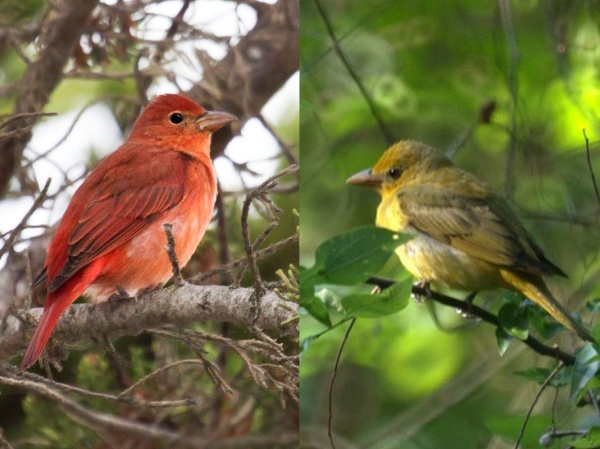
Here’s an amazing fact: Among birds, and especially among declining species, there are more males than females.
It’s always easier to find male birds during breeding bird surveys. They’re clothed in conspicuous colors and put on a big show, singing and displaying to claim territory and find a mate. Females are hard to see, cryptically colored, sing less (if at all), and are secretive around the nest. Unfortunately it’s not just flashiness that makes males easier to count. The males are saying “Notice me!” because there aren’t enough females to go around.
In 2007, after reviewing hundreds of scientific papers, ornithologist Dr. Paul Donald concluded that in the vast majority of bird species males outnumber females. This means we can’t extrapolate the size of a breeding population based on the number of males we count.
Why does this happen? Dr. Donald explained, “It’s not that females are producing more sons than daughters, because at hatching the sex ratio is generally equal. The only possible explanation is that females do not live as long as males. As generations grow older, they become increasingly dominated by males as more females die off.”
Dr. Donald also found that the skewed sex ratio is even worse among endangered birds and at its worst among the rarest species. He hypothesized this is due to predation of females while on the nest — the double whammy of killing current and future generations at the same time.
Summer tanagers gave me personal experience with this sex ratio phenomenon.
The City of Pittsburgh is outside the summer tanagers’ range so it was quite rare that I found a pair of summer tanagers breeding in Schenley Park in 2011. I noticed them just after their nest failed (due to a predator) because the male was impossible to ignore. He was so angry he was shouting at everyone.
He and his lady tried for a second nest but it was too late in the season and they dispersed without success. The next spring he was back again and easy to see. He called and displayed, sang and sang, but she never showed up. He was alone and that made it much easier for everyone to find him. In 2012 he never had a mate.
This year he didn’t show up at all. I assume both he and his lady have died.
Fortunately summer tanagers have a very wide range and their population is doing well — they are listed as “Least Concern” — but they illustrated Dr. Donald’s finding: Among most bird species there are more males than females.
(photos of summer tanagers (male on left, female on right) from Wikimedia Commons)